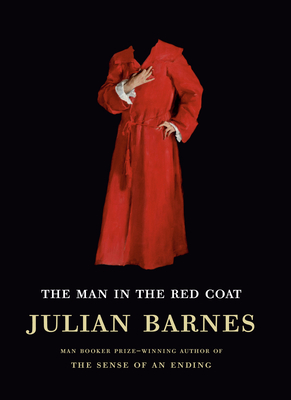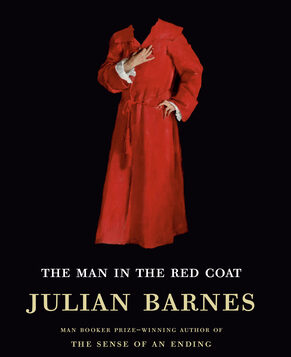 The Man in the Red Coat
The Man in the Red Coat
by Julian Barnes
Alfred Knopf. 288 pages, $26.95
THE MAN in the Red Coat is a book about the subject of John Singer Sargent’s portrait of a Parisian doctor named Samuel Pozzi. It’s also about two novels—Joris-Karl Huysmans’ À Rebours and Oscar Wilde’s The Picture of Dorian Gray; two trials—those of Alfred Dreyfus and Oscar Wilde; two homosexuals—Robert de Montesquiou (the model for Proust’s character the Baron de Charlus) and Jean Lorrain, a Parisian journalist; and various socialites, assassins, artists, and scientists who all lived during the Belle Époque, a cultural period which lasted from roughly 1876 to 1914, and which, by the time you’ve finished Julian Barnes’ book, fully justifies the adjectives he gives it: “decadent, hectic, violent, narcissistic and neurotic.”
It is not, strictly speaking, a biography of Pozzi. That appeared in 1992 courtesy of Claude Vanderpooten (Samuel Pozzi—l’ami des femmes). In Barnes’ version of Pozzi’s life, the society doctor shares the stage with other people, primarily Montesquiou and Wilde. Pozzi knew both Proust and his brother Robert, but Marcel remains in the wings, although we do hear the story of the duel Proust fought after Jean Lorrain insinuated, in a review of Proust’s first book, Pleasures and Days, that Proust was homosexual.
Pozzi “was everywhere,” Barnes says, like some Parisian Zelig. A brilliant surgeon and pioneering gynecologist, he had a following in Parisian society, not to mention affairs with some of his patients, including, probably, his lifelong friend Sarah Bernhardt (who called him “Doctor Dieu”). It was this reputation that drew Barnes to Pozzi when he first encountered his portrait on loan in London several years ago. (After being kept in the family until 1967, it now resides at the Armand Hammer Museum in Los Angeles.) The idea of a gynecologist having affairs with his patients may have appealed to Barnes for its sexual aspects alone. But Pozzi was much more than a Don Juan. It was Samuel Pozzi who persuaded the French to accept gynecology as a separate field, who brought back to France improvements in surgery and patient care gleaned on his travels to England and North and South America, who introduced improvements in the care of the mentally ill (via ideas brought back from a trip to Argentina), established antiseptic practices learned from Joseph Lister while visiting England, and wrote the first textbook on gynecology. He was an avid art and book collector to boot, the husband of an heiress, the father of three children, and in the words of Princess Alice of Monaco, “disgustingly handsome.”
Photographs attest to that judgment, though Sargent’s portrait (given a full-page reproduction in this handsomely produced book) is something more. In the painting, Pozzi has an almost ethereal beauty: long, tapered fingers, a ghostly pallor, and large, beautiful eyes. There’s something so dreamy about him that he looks like a movie star. In real life, judging from the black-and-white photographs in Barnes’ book, he was merely … disgustingly handsome.
The book opens with a visit Pozzi makes to London with his friends Comte Robert de Montesquiou and Prince Edmond de Polignac (another homosexual, who ended up marrying the American lesbian Winnaretta Singer and having perhaps the only happy marriage in the book). Sargent has asked his friend Henry James (who would advise Sargent to move to England after the scandal produced by another of Sargent’s portraits, Madame X) to show Sargent’s three French friends around, which James does. He introduces them to Whistler and Burne-Jones, arranges a visit to the Peacock Room, takes them to lunch at his club, finds Pozzi “charming” and Montesquiou “curious but slight.” The three men return to Paris—with the fabrics, the bespoke suits, the paintings they went there to buy—and the rest of the book is about their lives in Paris during one of the most extraordinarily fertile—nay, fermented—times in European cultural history.
Andrew Holleran is the author of the novelsDancer from the Dance, Nights in Aruba, The Beauty of Men, andGrief.







